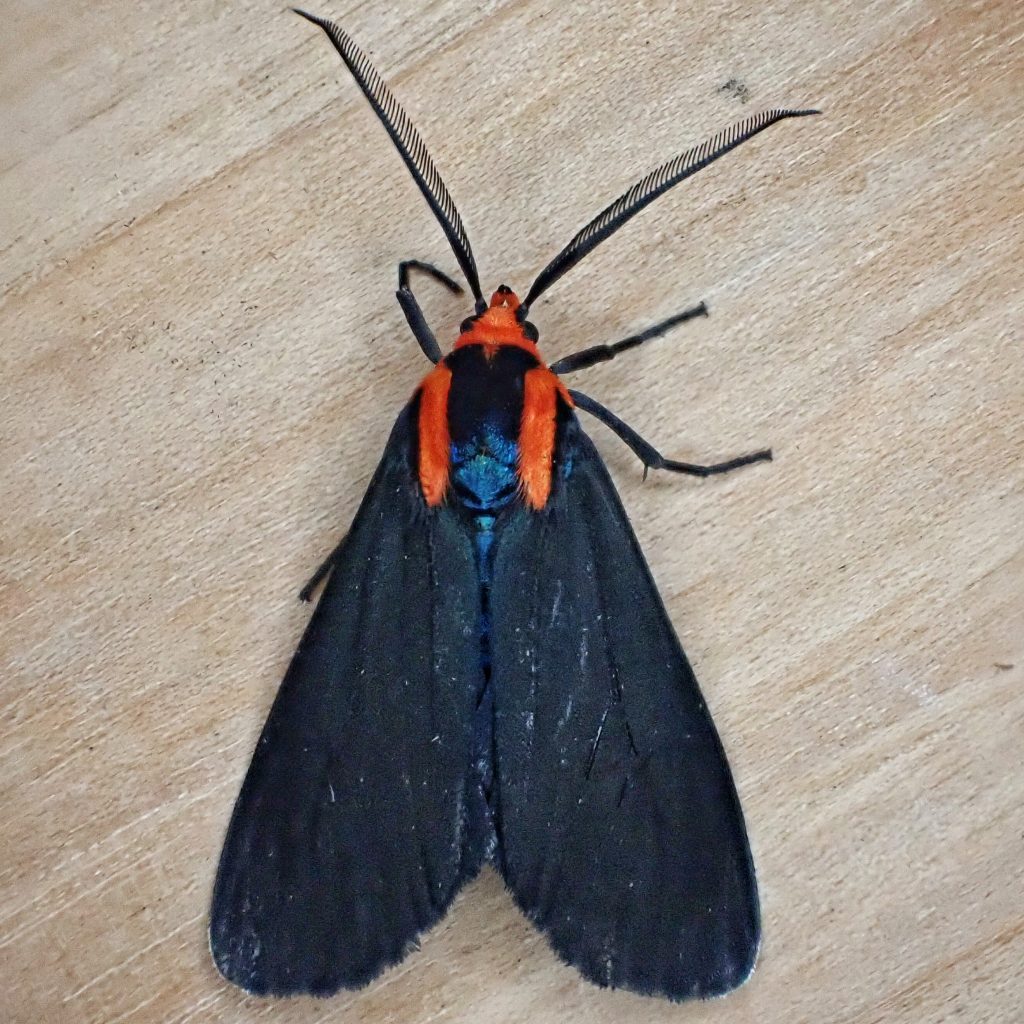
I found this beautiful moth on the same excursion to Wahkiakum County where Morgan and I found the committee of Turkey Vultures. I had pulled over on a side road hoping to get some photos of a flock of American Goldfinches, but they flew before I got within range. On the way back I saw this moth flitting in and out of the roadside grass. It would only settle briefly and move on, so I never felt like I’d gotten a decent photo. I considered going back for a net, but knew I’d lose the moth in that distraction. Then it came out of the grass to cross the road. Without really thinking, although with more than a hint of desperation, I took two steps towards it, flung out my hand, and caught it in mid air. I’m sure I was even more surprised than the moth when I carefully opened my hand a crack, and saw it in my palm.
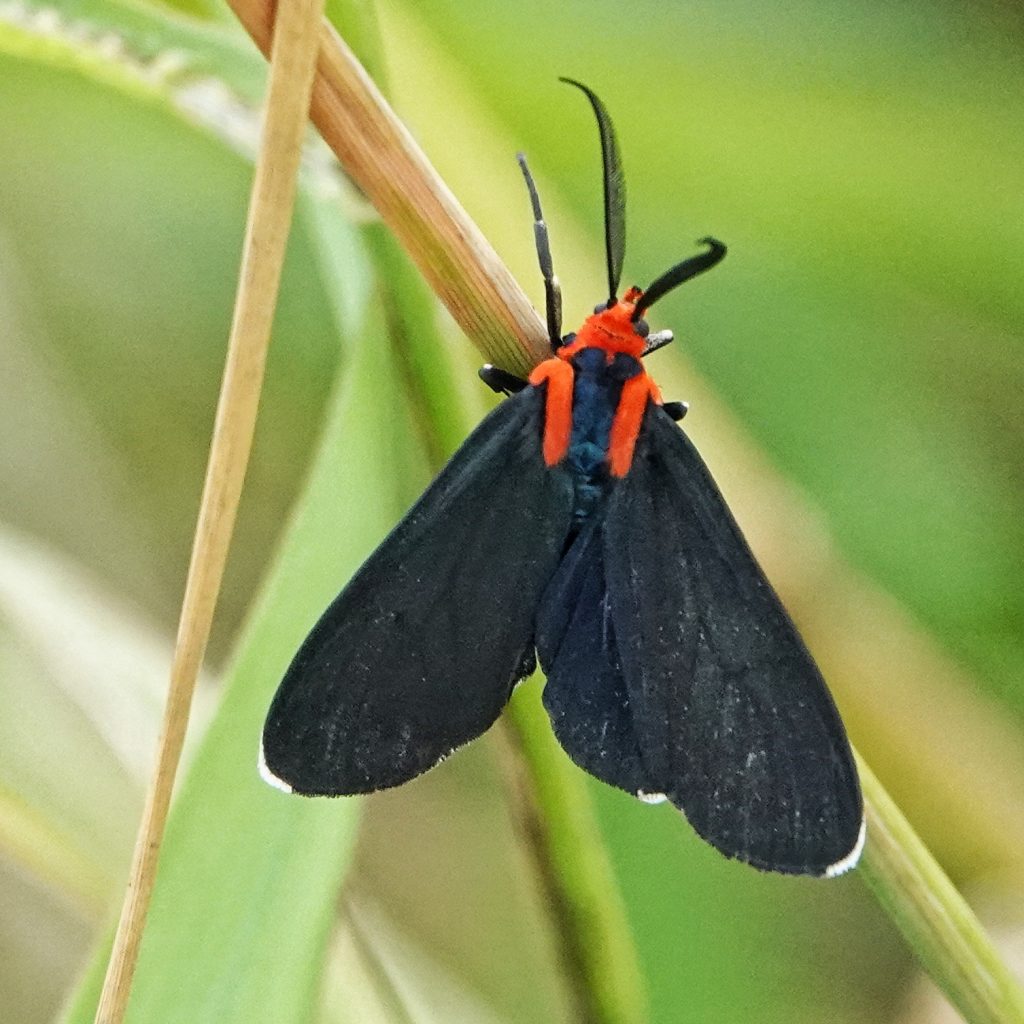
Ctenucha (pronounced ‘tenuka’) rubroscapus inhabits many of the same habitats as Cisseps fulvicollis, which I profiled here, although Ctenucha rubroscapus is confined to lower elevations on the wet side of the Cascades. Their larvae also consume grasses and sedges, and the adults of both species nectar primarily on flowers in Asteraceae, with a seeming preference for goldenrod and tansy ragwort. That is why I decided to do these profiles back to back, so readers could get a sense of which one they might be finding. But I have to admit that, despite all of their similarities, I have personally never found them flying together, although that certainly doesn’t mean they don’t do so.
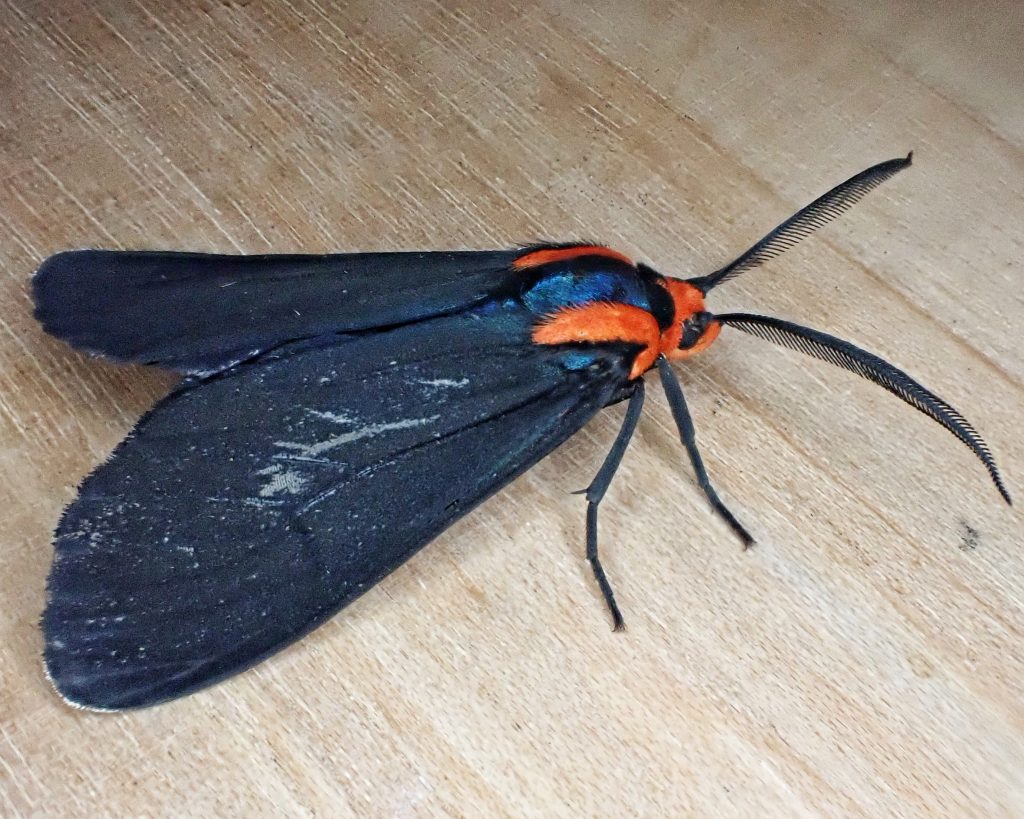
There have been questions for many years about whether Ctenucha rubroscapus and Ctenucha multifaria are separate species, and it seems that expert opinion is coming down on the side of them being a single species because, even within a given population there is variation that overlaps both taxon’s description. One of the problems though is that, while the vast number of specimens have been labeled C. rubroscapus, C. multifaria would have precedence, having been assigned 3 years earlier. That would make things confusing, and since my book references all speak of Ctenucha rubroscapus, and don’t even mention C. multifaria, I am sticking with that appellation. And all of the other taxonomic ambiguity I mentioned in the profile of Cisseps fulvicollis also applies here, since they are both ctenuchids, moths with elongated scapes (the 1st antennal segment).

Description– Medium sized (fw length 19-20mm) black moth with a yellow orange head, metallic blue thorax with red lines of scales at the wing bases, and white apical margins for both fore- and hindwings; hindwing is solid black except for the apical margin; abdomen is metallic blue.
Similar species–Cisseps fulvicollis lacks orange along the thorax, has a dull black thorax, and has a whitish grey, translucent patch in the center of the hindwings; Ctenucha virginica, which may now be present in our region since its territory is expanding and it has been found in eastern BC, lacks orange margins along the thorax.
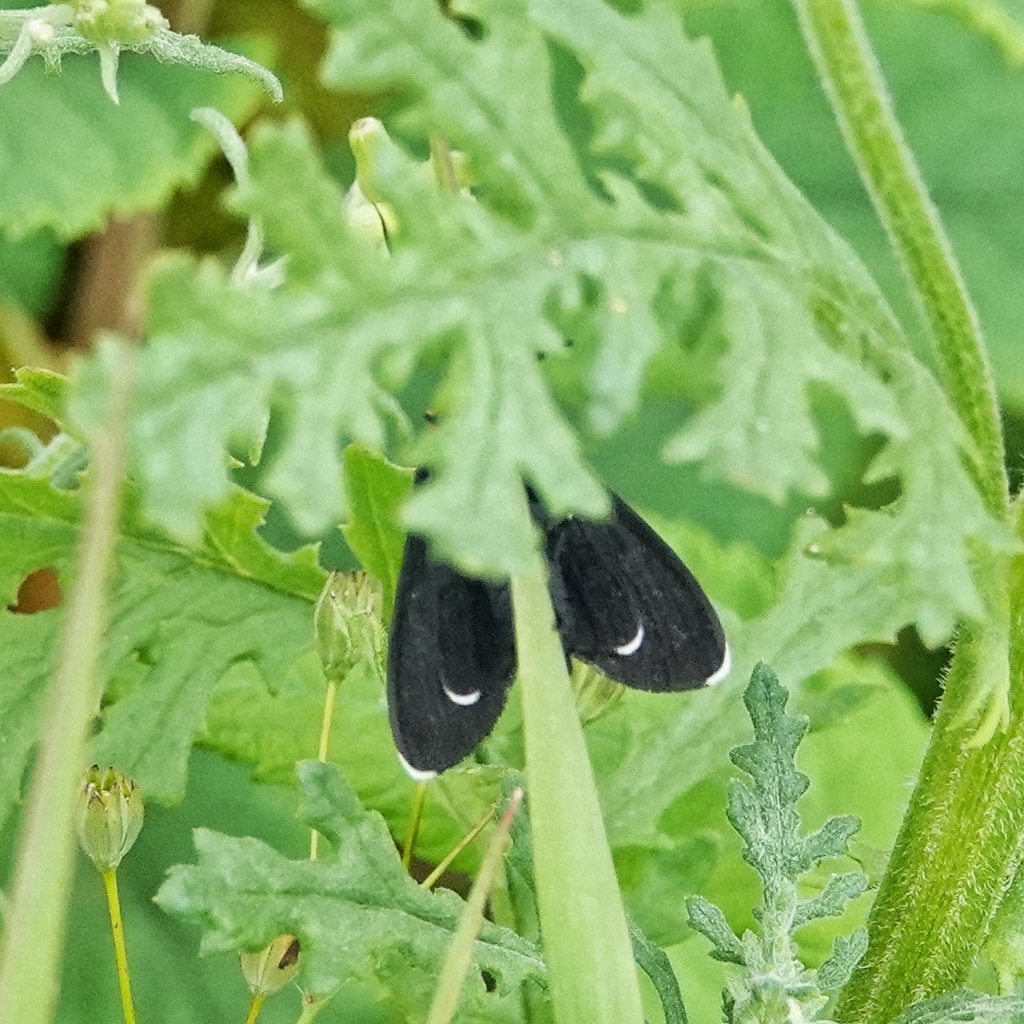
Habitat-Wet meadows and prairies, grasslands, and fields at low elevation
Range-Pacific Coast; only found west of the Cascades, and in sw Oregon/nw California in our region; most prevalent near the coast.
Adults active-Strictly diurnal; mid June to late September
Life cycle-Univoltine; seems likely they overwinter as larvae in diapause, since adults don’t appear until June, but I can find no corroboration for this.
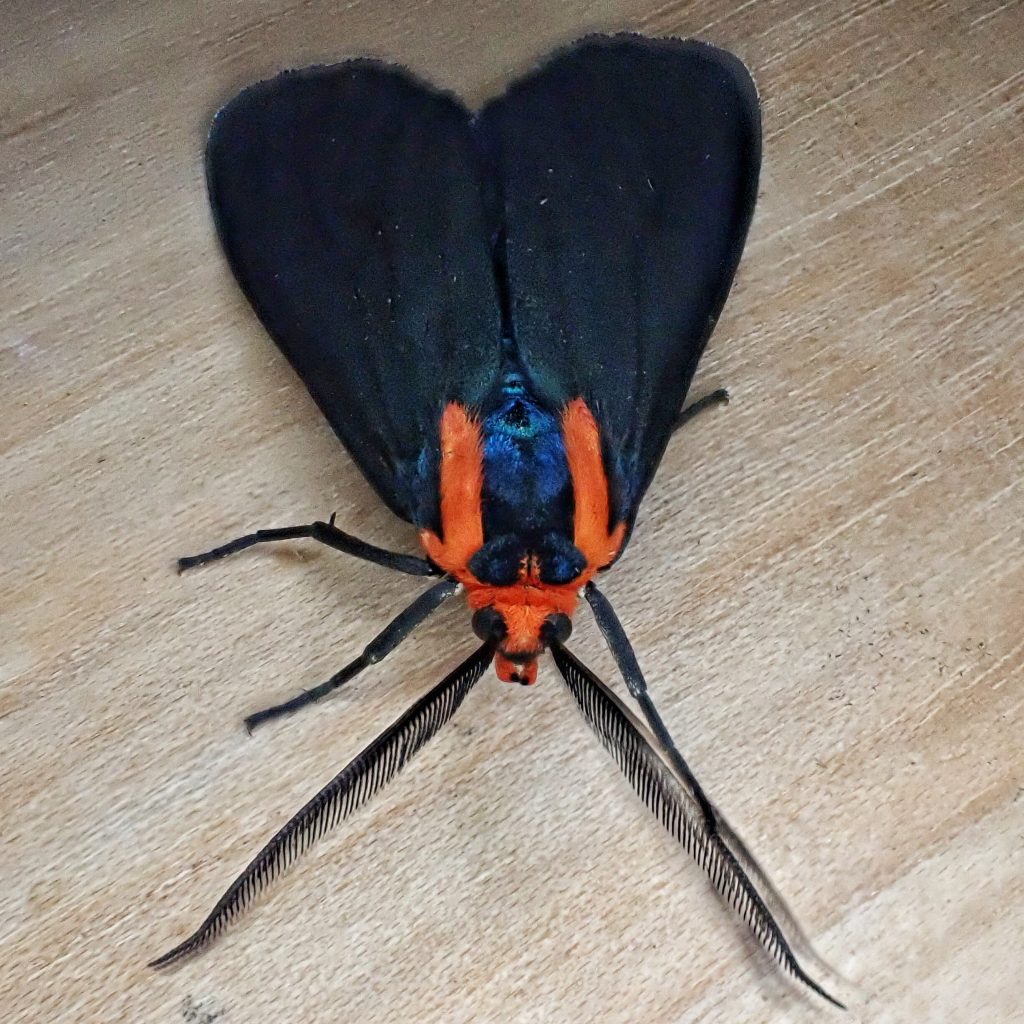
Eats-Larvae feed on grasses (such as Dactylis or Elymus) and sedges; adults nectar at various Asteraceae, especially goldenrod and tansy ragwort.
Eaten by-I would guess that, being in the same types of habitat with the same larval host preferences as Cisseps fulvicollis, the caterpillars are also parasitized by the Ichneumonid wasp Itoplectis conquisitor and Ichneumon sp. of the group winkleyi, but I can find no corroboration for this; having the same nectaring preferences as Cisseps fulvicollis, I would guess that the adults are prey for insectivores not deterred by the wasp mimicry and aposematic coloring, but I can find no corroboration for this either.
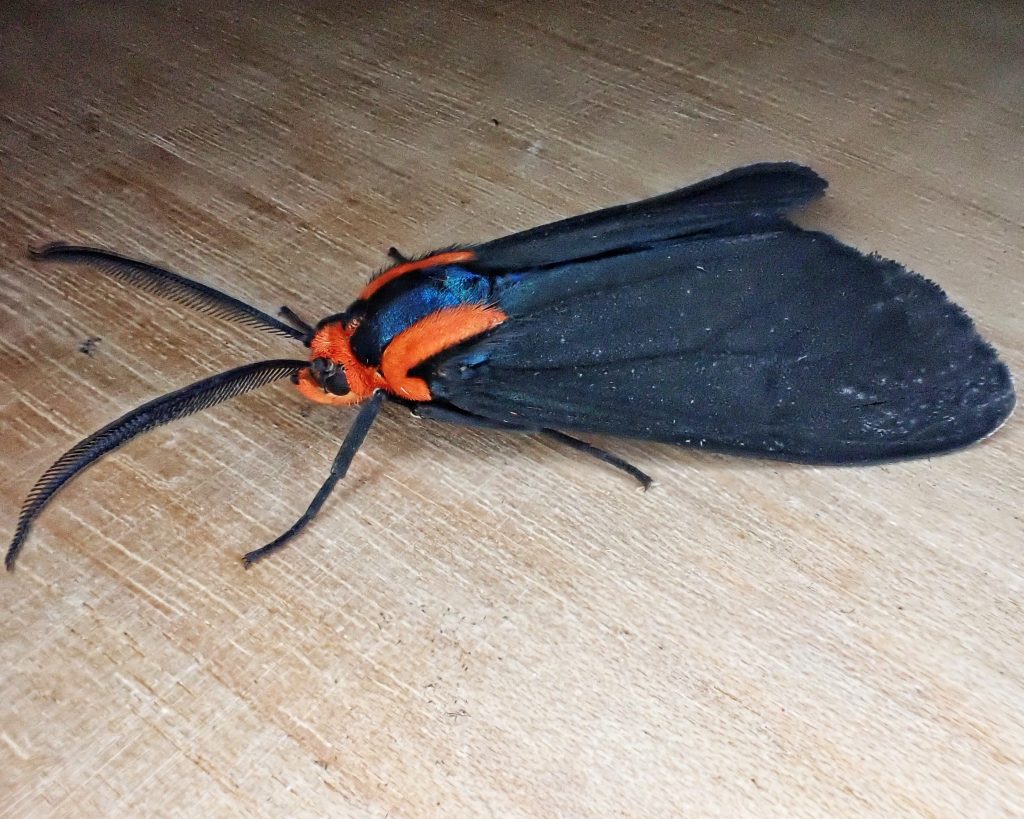
Etymology of names–Ctenucha is from the Greek words for ‘comb’ and ‘night’, and refers to the dark colored and comb-like male antenna. The specific epithet rubroscapus Is from the Latin words for ‘red’ and ‘flower stalk’, and refers first to the red scales at the base of the forewing (the tegulae), and then to the fact that it has an elongated scape, although that is a distinguishing characteristic of ctenuchids in general, and is why they are called scape moths. The specific epithet multifaria may be from the Latin words for ‘many multiplications of parts’, but I cannot ascertain to what that refers.
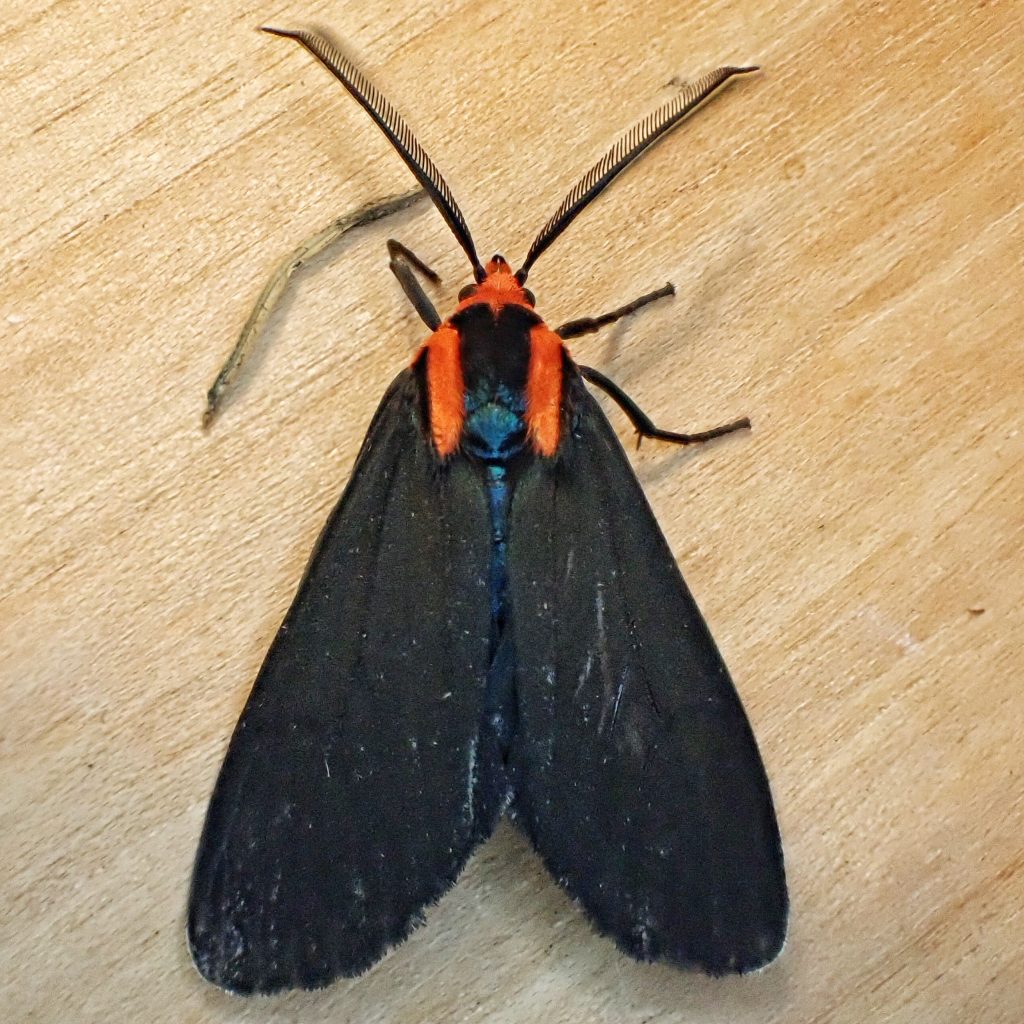
https://bugguide.net/node/view/961941
https://www.butterfliesandmoths.org/species/Ctenucha-rubroscapus
http://mothphotographersgroup.msstate.edu/species.php?hodges=8264
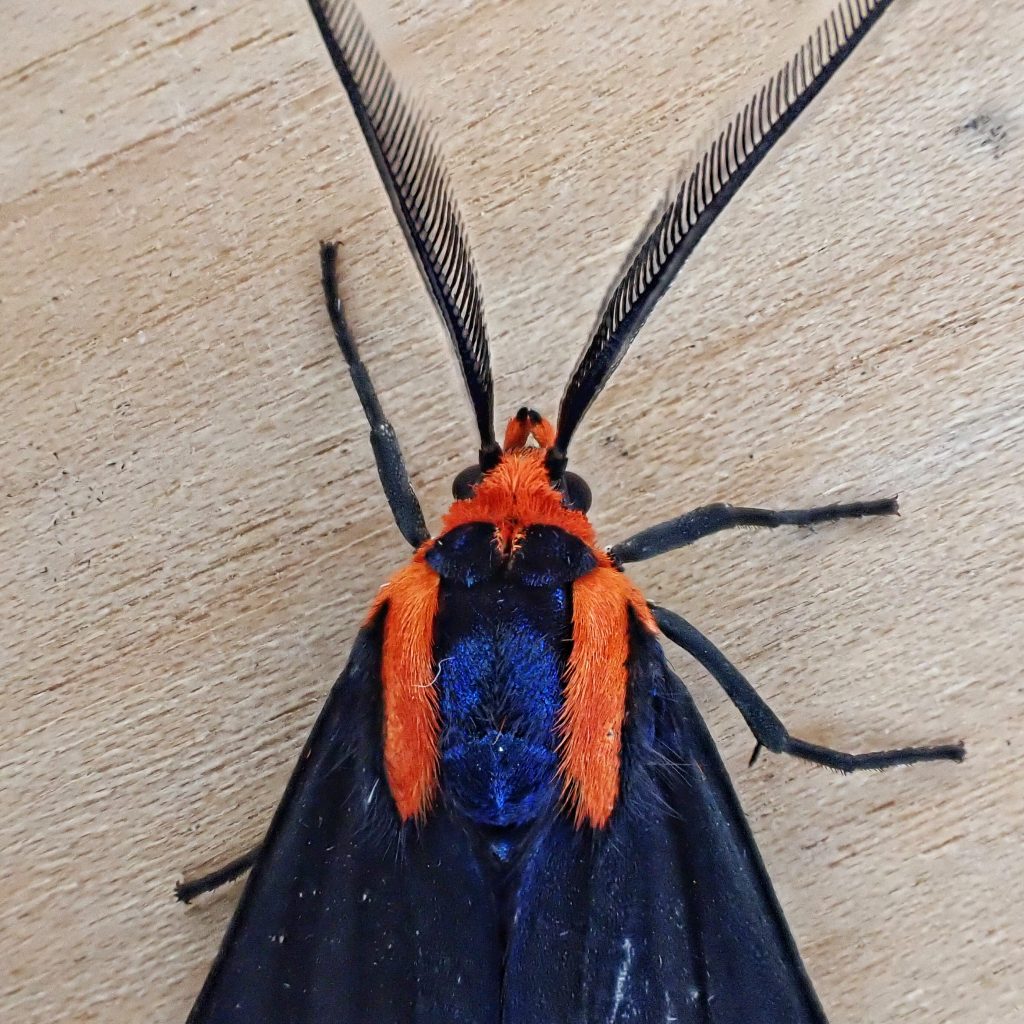
1 thought on “Ctenucha rubroscapus/multifaria (Red-shouldered Ctenucha Moth)”